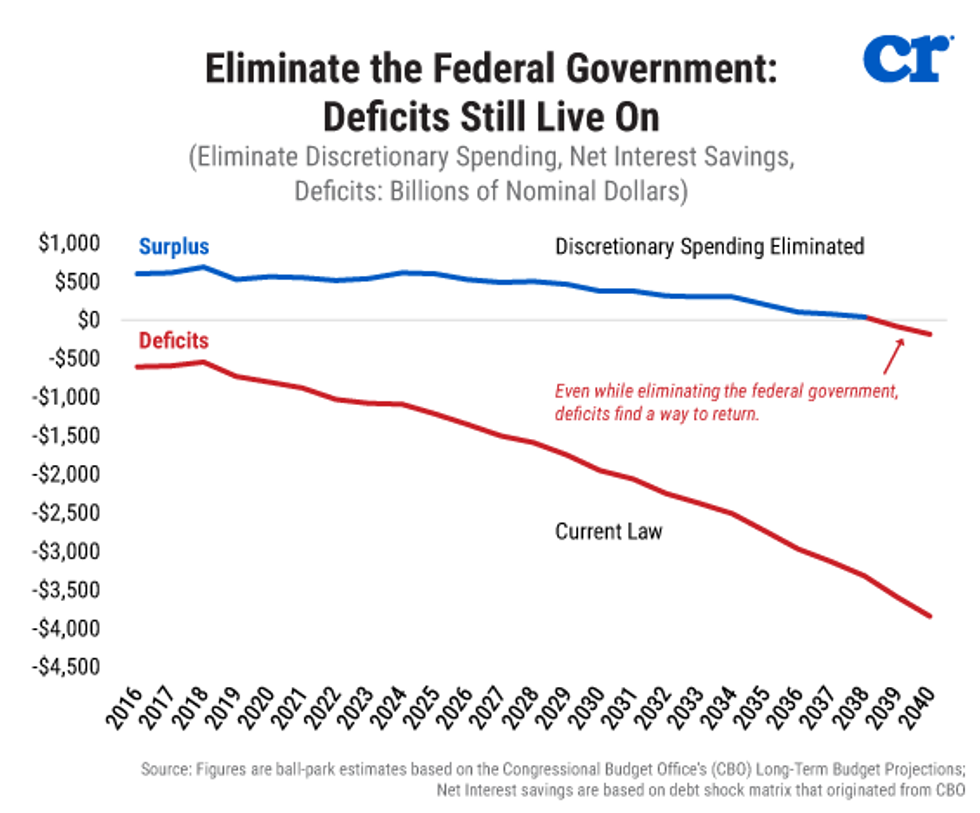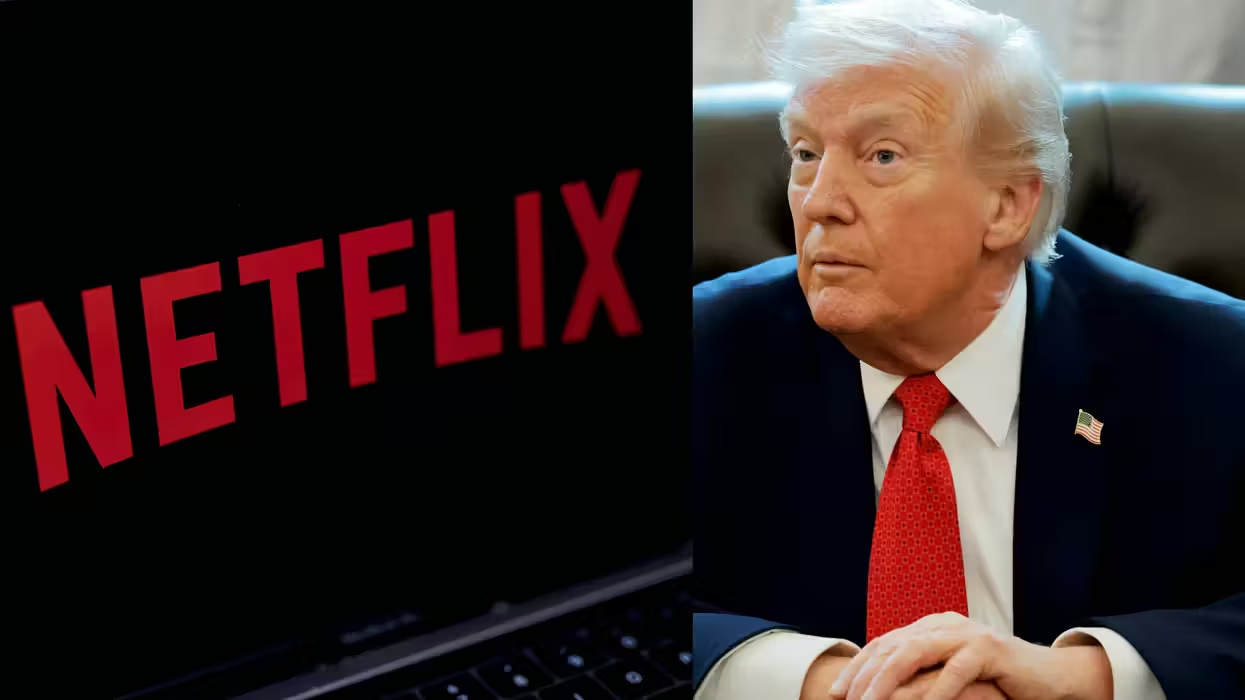
© 2025 Blaze Media LLC. All rights reserved.
It’s hard to believe that it’s almost budget season in Washington. That means that before this crazy election is concluded, before members can settle into their districts for a ballot showdown, Congress must authorize spending to keep the government running — and do it prior to October 1.
And as the spending season returns, so too does the liberal media hyperbole that includes wild narratives of a federal government living off meager budgets, agencies whittled thin, and services dwindling. Take this headline published by CNN, “Domestic spending is near 53-year lows. Yet Congress keeps cutting …”
Stories like the one at CNN persuade the reader to believe that Washington is actually cutting spending. Not only are these stories factually distorted, but they also focus on only one pillar of government spending: discretionary spending.
My colleague at Conservative Review, Logan Albright, addresses the fallacies of this article in a piece today, “'Centrist' CNN cherry-picks spending data to conform to leftist rhetoric.”
Discretionary spending is often a focal point for politicians. It is the pot of money that Congress actually has to vote on each year. It’s the money used to fund — among other things — our military, roads, education, homeland security, parks, and law enforcement.
Yet, that portion of the budget amounts to only 30 percent of all the money the government spends. Where is the rest of it? Well, there is another bucket of money within the government that remains on autopilot, called mandatory spending. This bucket of money, which equals nearly 70 percent of all the cash that leaves the Treasury, goes towards things like Medicare, Social Security, welfare, or interest payments on the debt.
The discretionary budget is important. While it’s not nearly as large as the mandatory budget, it will still spend $1.18 trillion this year. The most important austerity measures that have unfolded since Republicans took control of Congress were those like the Budget Control Act — a bill that reduced discretionary spending by more than $1.2 trillion.
Therefore, while the discretionary spending indeed needs trimming, Albright is correct when he says, “Cuts to discretionary spending will not be enough to solve the deficit crisis.”
But that is an understatement. Here is the really shocking news: If you eliminated all the discretionary spending within the government, you would still — YES, still — run deficits for the next 20 years.
In other words, if Congress cuts all the spending — the court systems and all departments (Agriculture, Commerce, Defense, Education, Energy, Homeland Security, Interior, Justice, Labor, State, Transportation, Treasury, Veterans Affairs, EPA, the White House, NASA, Small Business … OK, you get the point, right?) — the government would STILL be running a deficit for the next 20 years.
That is how bloated government spending truly is.
Assuming that interest rates stay really low for a long time (eye roll), then yes, the government could save more than $13 trillion on interest payments too. But that makes it all the more shocking. Eliminating $13 trillion in higher interest payments combined with wiping out all government still leaves the government bankrupt.
As you can see from the ball-park numbers in the chart, eliminating the discretionary side of government obviously catapults us into a healthy surplus — a surplus that continues on for a number of years (although, this does factor in the defunding of the IRS, so perhaps the lack of a government tax collector leaves it in deficit, anyway). Nevertheless, deficits still return after 2039.
This proves just how large our entitlement programs (Medicare, Medicaid and Social Security) have become. We could eliminate all of our discretionary spending and still be running a deficit due to the spending that is perpetually on autopilot. Sadly, none of the major presidential candidates are talking about America’s looming fiscal disaster. If nothing else, this graph proves where the problem truly is: with entitlements. Instead of offering proposals to reform programs like Social Security and Medicare, both Donald Trump and Hillary Clinton have offered to grow and expand these monstrosities.
The time for a true budget discussion has passed; we can no longer only quibble over highway funding or Planned Parenthood funding — even as important as those issues might be. We need to expand the conversation to include Social Security, Medicare, and other mandatory spending.
Otherwise, we won’t need to eliminate the government. It will simply go bankrupt and eliminate itself.
Want to leave a tip?
We answer to you. Help keep our content free of advertisers and big tech censorship by leaving a tip today.
Want to join the conversation?
Already a subscriber?
more stories
Sign up for the Blaze newsletter
By signing up, you agree to our Privacy Policy and Terms of Use, and agree to receive content that may sometimes include advertisements. You may opt out at any time.
Related Content
© 2025 Blaze Media LLC. All rights reserved.
Get the stories that matter most delivered directly to your inbox.
By signing up, you agree to our Privacy Policy and Terms of Use, and agree to receive content that may sometimes include advertisements. You may opt out at any time.







